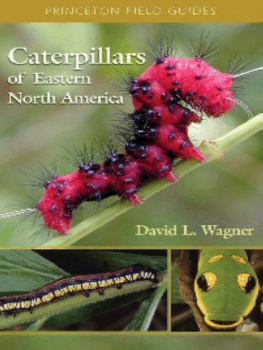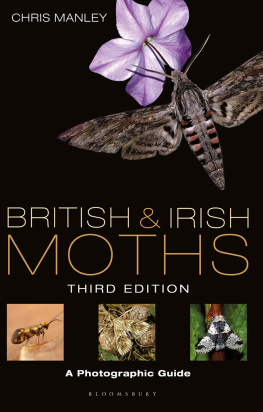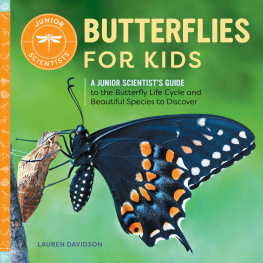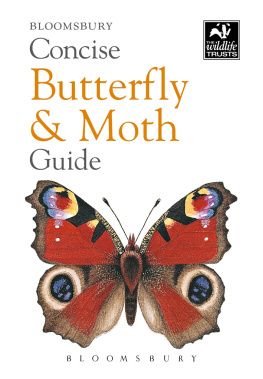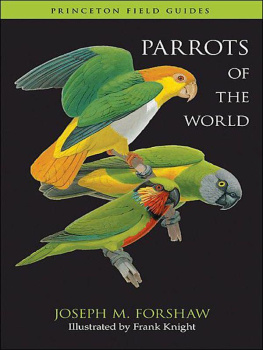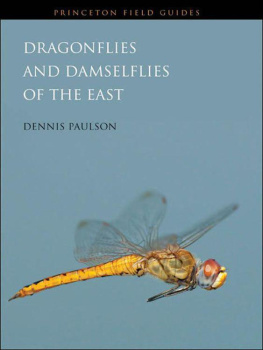David L. Wagner - Caterpillars of Eastern North America: A Guide to Identification and Natural History
Here you can read online David L. Wagner - Caterpillars of Eastern North America: A Guide to Identification and Natural History full text of the book (entire story) in english for free. Download pdf and epub, get meaning, cover and reviews about this ebook. year: 2005, publisher: Princeton University Press, genre: Romance novel. Description of the work, (preface) as well as reviews are available. Best literature library LitArk.com created for fans of good reading and offers a wide selection of genres:
Romance novel
Science fiction
Adventure
Detective
Science
History
Home and family
Prose
Art
Politics
Computer
Non-fiction
Religion
Business
Children
Humor
Choose a favorite category and find really read worthwhile books. Enjoy immersion in the world of imagination, feel the emotions of the characters or learn something new for yourself, make an fascinating discovery.
- Book:Caterpillars of Eastern North America: A Guide to Identification and Natural History
- Author:
- Publisher:Princeton University Press
- Genre:
- Year:2005
- Rating:4 / 5
- Favourites:Add to favourites
- Your mark:
Caterpillars of Eastern North America: A Guide to Identification and Natural History: summary, description and annotation
We offer to read an annotation, description, summary or preface (depends on what the author of the book "Caterpillars of Eastern North America: A Guide to Identification and Natural History" wrote himself). If you haven't found the necessary information about the book — write in the comments, we will try to find it.
This lavishly illustrated guide will enable you to identify the caterpillars of nearly 700 butterflies and moths found east of the Mississippi. The more than 1,200 color photographs and two dozen line drawings include numerous exceptionally striking images. The giant silk moths, tiger moths, and many other species covered include forest pests, common garden guests, economically important species, and of course, the Mescal Worm and Mexican Jumping Bean caterpillars. Full-page species accounts cover almost 400 species, with up to six images per species including an image of the adult plus succinct text with information on distribution, seasonal activity, foodplants, and life history. These accounts are generously complemented with additional images of earlier instars, closely related species, noteworthy behaviors, and other intriguing aspects of caterpillar biology.
Many caterpillars are illustrated here for the first time. Dozens of new foodplant records are presented and erroneous records are corrected. The book provides considerable information on the distribution, biology, and taxonomy of caterpillars beyond that available in other popular works on Eastern butterflies and moths. The introductory chapter covers caterpillar structure, life cycles, rearing, natural enemies, photography, and conservation. The section titled Caterpillar Projects will be of special interest to educators.
Given the dearth of accessible guides on the identification and natural history of caterpillars, Caterpillars of Eastern North America is a must for entomologists and museum curators, forest managers, conservation biologists and others who seek a compact, easy-to-use guide to the caterpillars of this vast region.
- A compact guide to nearly 700 caterpillars east of the Mississippi, from forest pests to garden guests and economically important species
- 1,200 color photos and 24 line drawings enable easy identification
- Full-page species accounts with image of adult insect for almost 400 species, plus succinct text on distribution and other vital information
- Many caterpillars illustrated here for the first time
- Current information on distribution, biology, and taxonomy not found in other popular works
- A section geared toward educators, Caterpillar Projects
- An indispensable resource for all who seek an easy-to-use guide to the caterpillars of this vast region
David L. Wagner: author's other books
Who wrote Caterpillars of Eastern North America: A Guide to Identification and Natural History? Find out the surname, the name of the author of the book and a list of all author's works by series.

